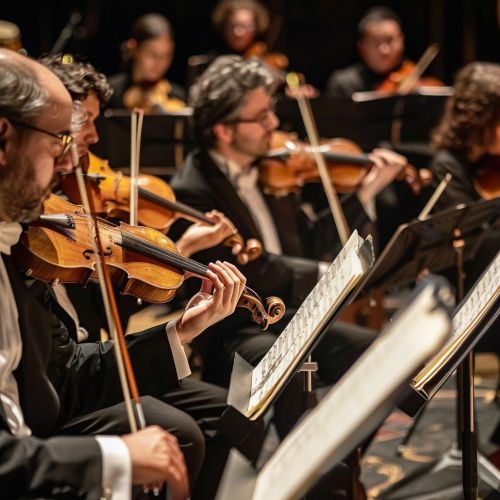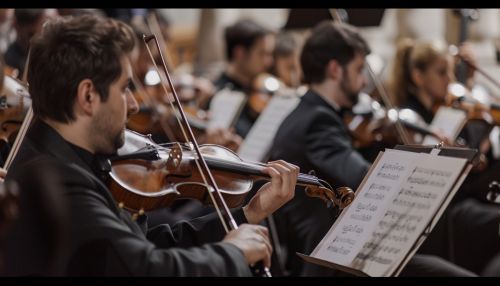20th-century music
Overview
The 20th century marked a significant shift in the evolution of music, with a move away from traditional forms and structures towards more experimental and diverse styles. This period saw the emergence of numerous new genres, including jazz, blues, rock, and electronic music, each of which had a profound impact on the musical landscape.
Early 20th Century
The early 20th century was a time of great change in the world of music. The traditional forms and structures of the 19th century were being challenged and redefined by composers such as Igor Stravinsky and Arnold Schoenberg. This period also saw the birth of jazz, a genre that would have a profound influence on the music of the century.


Modernism
The modernist movement in music, which emerged in the early 20th century, sought to break away from traditional forms and structures and explore new compositional techniques. Composers such as Anton Webern, Alban Berg, and Schoenberg were at the forefront of this movement, developing the twelve-tone technique, a method of composition that uses a series of all twelve notes in the chromatic scale.
Jazz and Blues
The early 20th century also saw the birth of jazz and blues, two genres that would have a profound influence on the music of the century. Originating in African American communities in the United States, these genres were characterized by their use of improvisation, syncopation, and the blue note.
Mid 20th Century
The mid 20th century was a period of great innovation in music, with the emergence of new genres such as rock and roll and the continued development of electronic music.
Rock and Roll
The 1950s saw the birth of rock and roll, a genre that combined elements of blues, jazz, and country music. Characterized by its strong, driving rhythms and catchy melodies, rock and roll quickly became popular with young audiences and had a profound influence on the music of the second half of the century.
Electronic Music
The mid 20th century also saw the continued development of electronic music. Composers such as Karlheinz Stockhausen and Edgard Varèse began to experiment with electronic instruments and tape music, paving the way for the emergence of genres such as synth-pop and techno in the later part of the century.
Late 20th Century
The late 20th century saw the continued diversification of music, with the emergence of numerous new genres and subgenres.
Pop Music
The 1980s and 1990s saw the rise of pop music, a genre characterized by its catchy melodies and widespread appeal. Artists such as Madonna and Michael Jackson dominated the charts during this period, with their music videos playing a key role in the rise of MTV.
Hip Hop
The late 20th century also saw the emergence of hip hop, a genre that originated in African American and Latino communities in the United States. Characterized by its use of rapping and DJing, hip hop quickly became a powerful cultural force, influencing music, fashion, and art.
Conclusion
The 20th century was a period of great change and innovation in music, with the emergence of numerous new genres and the continued development of new compositional techniques. From the modernist compositions of the early century to the pop and hip hop of the late century, the music of this period reflects the diverse and rapidly changing cultural landscape of the 20th century.
